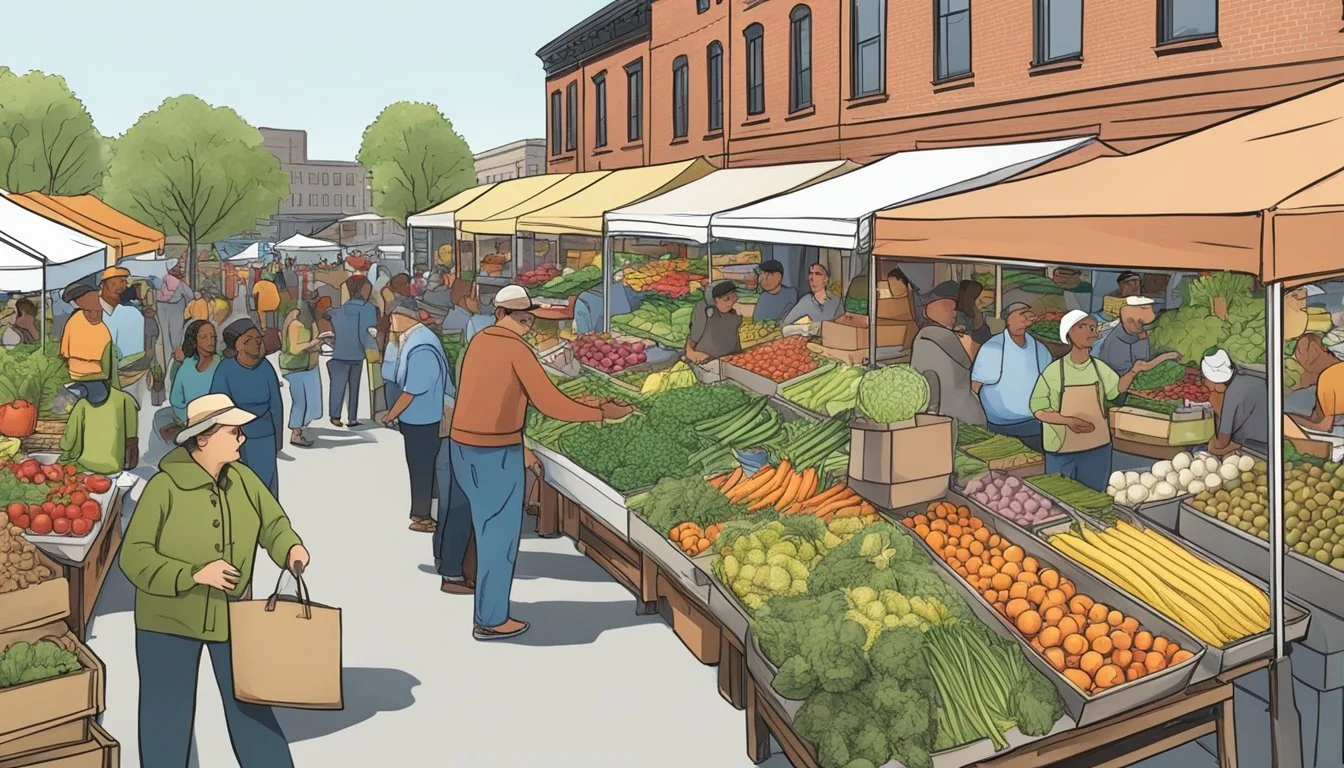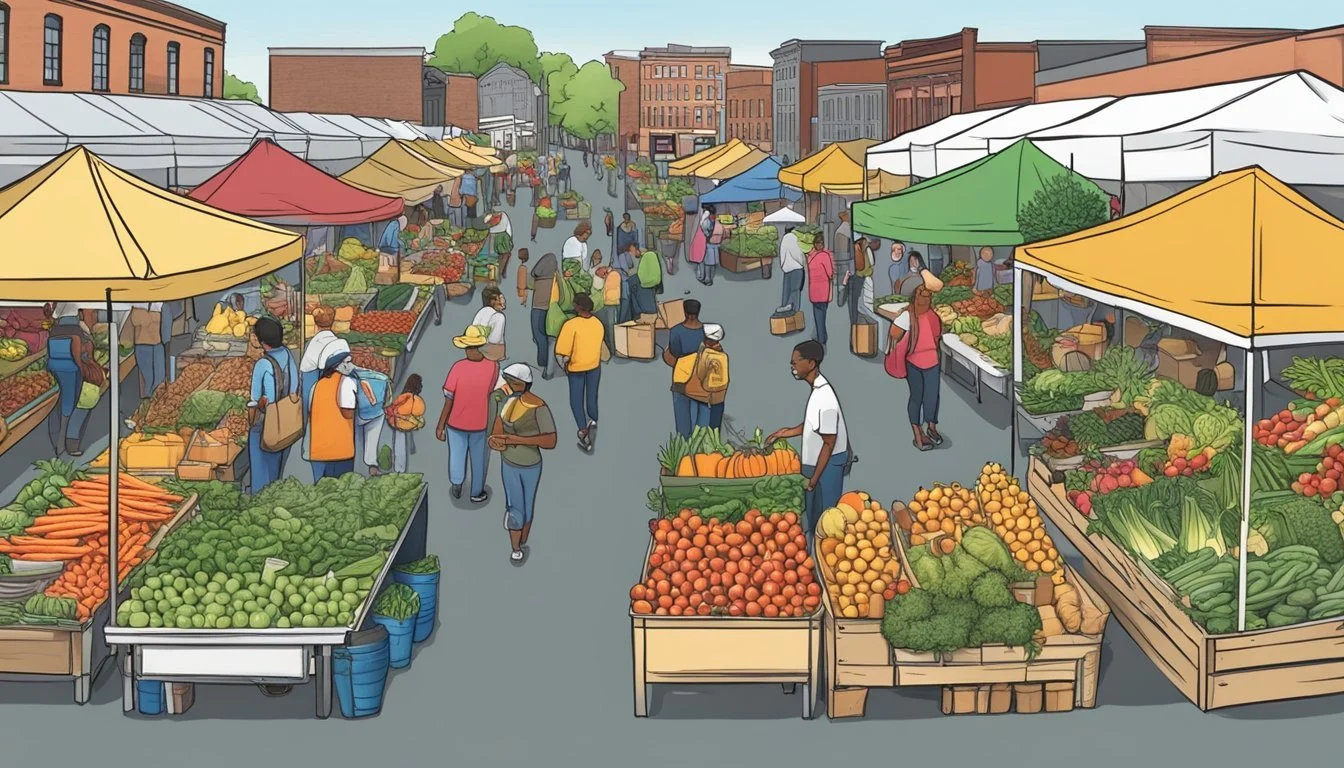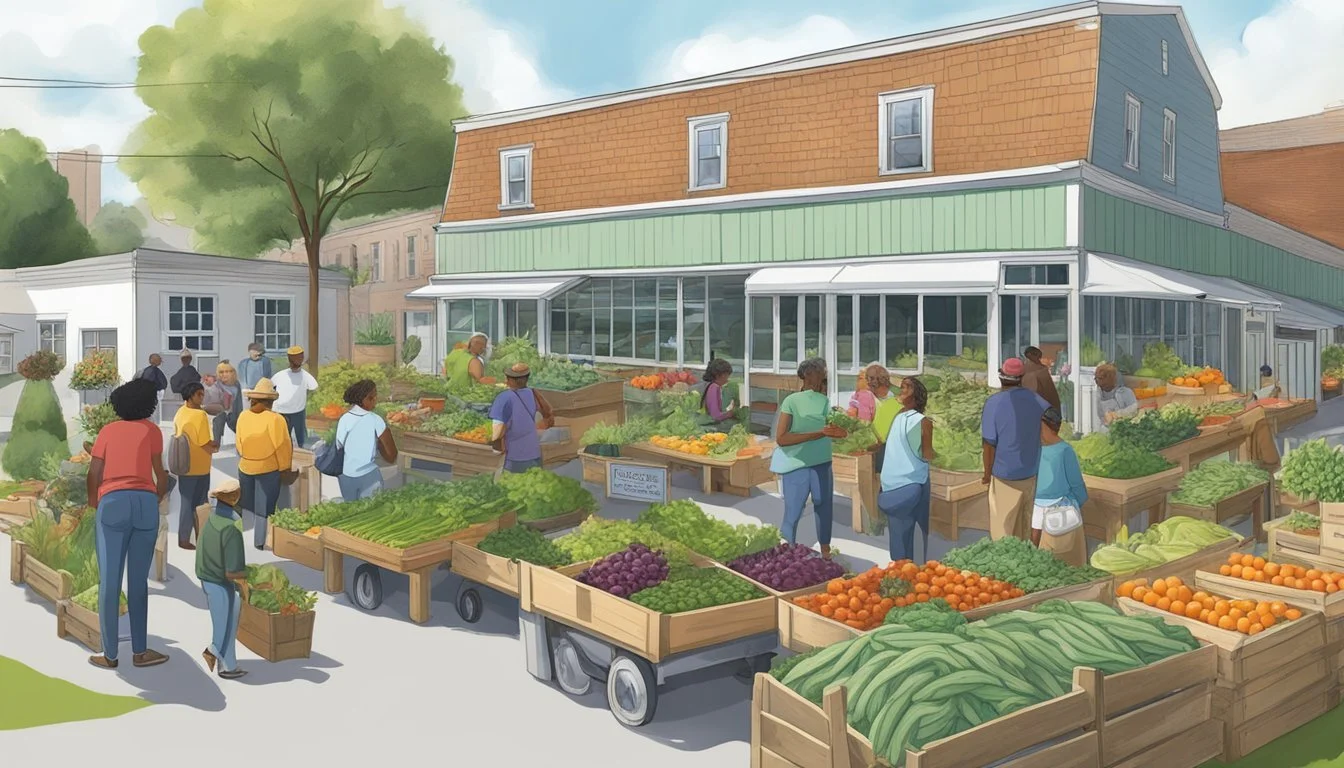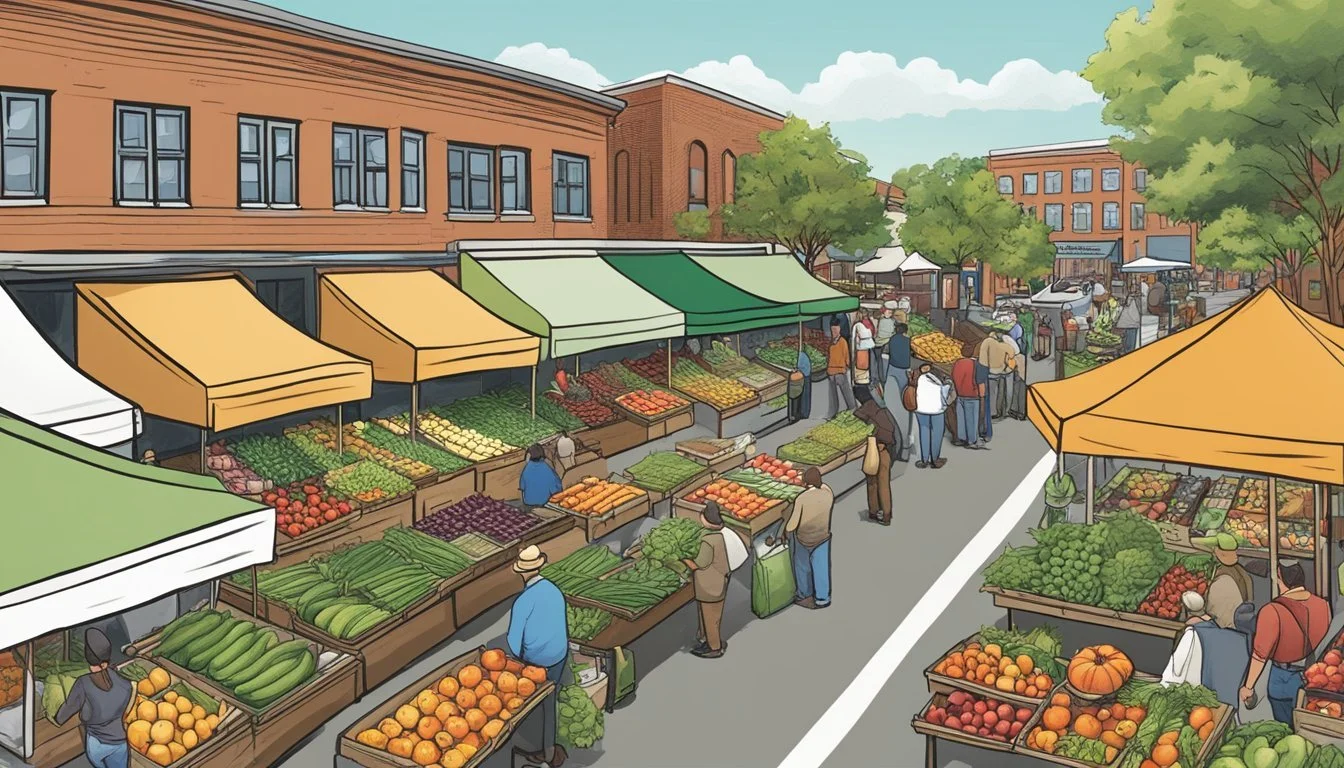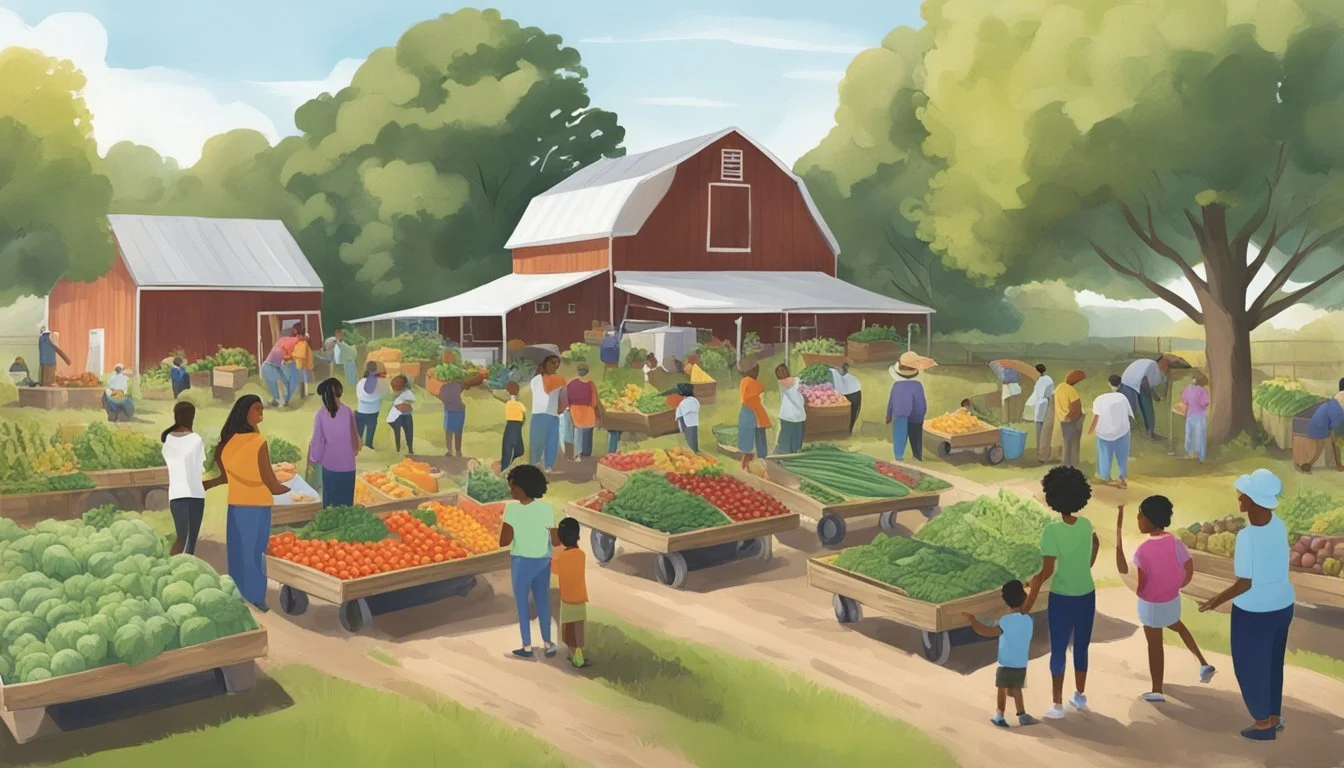Community Supported Agriculture (CSA) in Bridgeport, CT
Embracing Local Farming Partnerships
Community Supported Agriculture (CSA) is garnering increased attention in Bridgeport, Connecticut, as a sustainable method for residents to access fresh, locally-grown produce while directly supporting the local agricultural community. This food distribution system is built on a straightforward premise: consumers purchase a "share" of a farm's harvest in advance and, in return, receive a portion of the farm's output throughout the growing season. This mutually beneficial arrangement helps to create a stable financial base for farmers and fosters a deeper connection between consumers and the source of their food.
Bridgeport, CT, with its robust community and focus on sustainability, has seen a rise in CSA programs that offer a variety of farm-fresh products, including vegetables, fruits, dairy, meats, and even baked goods. Residents who subscribe to a CSA program not only enjoy the health benefits of eating fresh and seasonal food but also contribute to the local economy and the environment by reducing food miles and packaging waste.
The CSA model in Bridgeport is adaptive, with different farms offering a range of share options and pick-up locations to accommodate the needs of the community. This flexibility addresses barriers to fresh food access and supports diverse dietary preferences and budgets, all while ensuring that local agriculture has a prominent and secure place in Connecticut's urban landscape.
Understanding CSA
In Bridgeport, Connecticut, Community Supported Agriculture (CSA) represents a collaboration between farmers and consumers, relying on mutual commitment. This section explores the foundations and benefits of CSA programs, offering insights that directly impact both the local agricultural economy and consumers.
History and Principles of CSA
Community Supported Agriculture emerged as a way for consumers to buy local, seasonal produce directly from farmers. The model is built on the principle of shared risk and reward: consumers pay for produce in advance, which provides farmers with necessary capital at the start of the season. In return, consumers receive fresh food throughout the growing season. This system encourages sustainable farming practices and fosters a strong sense of community.
Benefits of Community Supported Agriculture
Participating in a CSA program offers manifold benefits:
For Farmers: A reliable source of income and a direct connection to consumers.
For Consumers: Access to fresh, locally-grown produce and transparency about the source of their food.
For the Community: CSA programs strengthen the local economy, reduce the carbon footprint associated with long-distance transportation of food, and help preserve farming as a livelihood.
By joining a CSA, consumers actively support their local farmers and, in turn, receive a weekly or bi-weekly share of the harvest. This model not only bolsters the local agricultural sector but also encourages healthy eating habits through seasonal eating.
CSA Structure
Community Supported Agriculture (CSA) in Bridgeport, CT, involves a symbiotic relationship where consumers support local farmers by purchasing shares of the harvest in advance. This system provides farmers with upfront capital and guarantees a market for their produce, while members enjoy fresh, local produce.
Share Types
CSA members can choose between different share sizes depending on their household needs. The most common options are full shares and half shares. A full share typically provides enough produce for a family of four for one week, while a half share suits individuals or small families. Share types may vary from farm to farm, with some offering additional options like flower, meat, or specialty produce shares.
Membership and Payment Plans
The membership for a CSA program often requires members to pay a fee upfront before the harvest season begins. This payment secures their share of the harvest. To make the CSA accessible, some farmers offer payment plans allowing members to break down the full cost into manageable installments. The upfront fee serves as critical support for farmers, covering early season costs like seeds and equipment.
Seasonality and Harvest
The length of the harvest season can vary, but in Connecticut, it mainly stretches from late spring to early fall. CSA members receive a portion of the crops as they are harvested, embracing the natural seasonality of farming. Members share the risks of agriculture with the farmers, such as unfavorable weather or pest infestations, which can affect the quantity and type of produce they receive.
Each farm operates its CSA program uniquely, catering to local climate, crop availability, and community needs, but the structure dedicated to supporting sustainable agriculture remains consistent.
Local Farms in Bridgeport
Bridgeport, Connecticut, is a hub for those seeking fresh, locally-produced food through various farms offering CSA programs, farm stands, and farmers markets.
Participating Farms and Products
Several farms in the Bridgeport area engage in Community Supported Agriculture (CSA) programs, eagerly connecting consumers with an array of products:
Millstone Farm: Millstone offers pastured heirloom breed sheep, pigs, and poultry along with a versatile selection of vegetables. Their focus on small-scale agriculture is evident in the quality of their produce and meats.
Reservoir Community Farm: Specializes in urban farming and providing fresh produce to the community even amidst urban challenges.
Products Commonly Available in CSAs:
Vegetables: A variety of seasonal vegetables, farmed with sustainable methods.
Meat: Includes heirloom breed sheep, pigs, and poultry.
Eggs: Often available from farms raising pastured poultry.
Dairy: Some farms may offer dairy products from small herds.
Fruit: Seasonal fruits are typical offerings in CSA shares.
Honey: Local honey can sometimes be included or available for purchase.
Farm Share Program Details
Season Length: Often varies from farm to farm, but generally spans from spring to fall, with some offering winter shares.
Pick-up: Most require on-farm pick-up, though some may offer delivery options.
Share Size: Typically offered in different sizes to accommodate single individuals up to large families.
Organic and Conventional Options
Organic Farms: There is an increasing number of organic options, providing produce grown without synthetic pesticides or fertilizers.
Conventional Farms: Focus on sustainable and responsible practices, though may not be certified organic.
Note on Certification:
Not all farms claiming sustainable practices are certified organic due to the cost and complexity of the certification process, though they may follow organic farming principles.
Connecting With Farms
Community Supported Agriculture in the Bridgeport, CT area offers a direct bridge for consumers to engage with local farms. Through CSAs, individuals in the region can subscribe to receive fresh, farm-produced goods while supporting sustainable agriculture and strengthening the local food network.
Networks and Associations
Connecticut NOFA (The Northeast Organic Farming Association of Connecticut) acts as a pivotal organization within the state for those interested in organic farming and gardening. It connects consumers to local farmers and provides resources for individuals seeking to participate in CSA programs. The CT NOFA Farm Share Program is designed to aid those needing financial assistance to access CSA shares while assuring that the farmers receive full payment for their produce.
Key Contacts for CSA in Connecticut:
CT NOFA: Connects farmers and consumers and offers a Farm Share Program.
Local Networks: Many local farming networks link consumers to nearby CSA opportunities.
Pickup Locations
CSA subscribers typically arrange for pickup locations where they can receive their shares of freshly harvested produce on a regular basis. In the Bridgeport area, pickups may occur at:
Local Farmers Markets: Typically offer convenient areas for subscribers to collect their CSA shares.
Designated Farm Sites: Some farms may offer pickups directly at the farm, providing a firsthand view of where food is grown.
Alternative Locations: In certain cases, pickups might be scheduled at community centers or other central sites within the Bridgeport vicinity.
Examples of CSA Pickup Locations:
Farmers Markets: Bridgeport farmers markets could serve as CSA distribution points.
Farms: Local farms like Millstone Farm in nearby Wilton offers fresh produce for its CSA subscribers.
Community Centers: Can be used as pickup locations if arranged by the CSA provider.
Support and Involvement
In Bridgeport, the support and involvement in Community Supported Agriculture (CSA) are vital to sustaining local farms and fostering community engagement. These efforts are realized through various events, educational initiatives, and the active participation of families and individuals in CSA programs.
Volunteer Opportunities and Events
To bolster the efficacy of CSAs in Bridgeport, farms often rely on volunteers to assist with daily operations and special events. Regular volunteer activities may include planting, weeding, and harvesting. Farms also host seasonal events that encourage participation from CSA members and the broader community. These events, such as annual Harvest Fests, invite families and children to celebrate and learn more about local agriculture and their role in the food system.
Education and Community Engagement
Education plays a crucial role in the success of CSAs by connecting consumers with the source of their food. In Bridgeport, urban farming initiatives aim to inform and engage residents, particularly focusing on children through school programs and interactive farm visits. Community engagement is also reinforced through the Farm Share Program, which increases accessibility to CSA shares for families needing financial assistance while ensuring that farmers receive full payment for their produce.
By participating in these initiatives, members of the community not only support the viability of local farms but also contribute to a stronger, more food-secure future.
Consumer Information
Community Supported Agriculture programs in Bridgeport, CT, offer consumers an opportunity to directly support local farms while receiving fresh, seasonal produce. Consumers should understand how to select a CSA, manage their subscriptions, and handle the diverse types of produce they receive.
Choosing the Right CSA
Consumers are advised to consider several factors when selecting a CSA. Key considerations include:
Proximity: Ideally, the CSA's pickup location should be conveniently located for the consumer.
Variety of Produce: Ensure the farm offers the types of produce you enjoy and want to experiment with.
Share Cost: Assess if the cost of shares aligns with your budget and the quantity of produce fits your needs.
Commitment: Understand the length of the CSA season and the commitment required.
It is recommended for consumers to visit local food directories, farm stores, or markets to inquire about available CSA options and to compare different offerings. They can also check for information about CSA sales and shares on the farms' websites.
Subscription Management
When managing a CSA subscription:
Keep track of sales and payment deadlines to maintain your subscription status.
Be prepared for the seasonality of produce—some weeks may yield more bounty than others.
Communicate with your farm about pickup or delivery options to ensure you can receive your shares without issue.
Consumers should contact their farms with questions regarding changes in subscription details or for share cost inquiries. Many farms are accommodating and can provide solutions for most concerns.
Food Handling and Preparation Tips
For food handling and preparation, consumers should remember that CSA produce is often harvested within 24 hours of pickup, which provides maximum freshness. Here are some tips:
Cleaning: Always wash your produce thoroughly before consumption.
Storage: Learn the optimal storage methods to extend the shelf life of your produce.
Usage: Be adventurous with your cooking to utilize all types of produce before the next pickup.
To expand your culinary repertoire and minimize waste, consumers might consider exploring farm-provided recipes or seeking tips from local food communities.
It is essential for consumers to be well-informed to maximize the benefits of their CSA shares. Careful selection, diligent management, and proper handling of CSA produce can lead to a fulfilling farm-to-table experience.
Economic and Social Impacts
Community Supported Agriculture in Bridgeport, CT, significantly enhances the local economy by supporting farmers directly and promoting environmental health, which offers extensive benefits to the community, such as access to fresh local produce and the fortification of local food systems.
Local Economy and Farmer Support
Community-supported agriculture fuels the local economy of Bridgeport by offering a stable revenue stream for farmers. Memberships allow for a consistent range in sales, which affords farmers a more predictable income compared to traditional markets. This direct relationship between consumers and local farms elevates the potential for economic stability for families involved in agriculture.
Membership Advantages: By paying for seasonal shares, members ensure continuous support for farmers.
Sales Diversification: CSA allows farmers to market their produce beyond typical sales outlets, adding robustness to their financial standing.
Environmental and Health Benefits
Participation in community-supported agriculture carries substantial environmental benefits, stemming from the commitment to sustainable farming practices that are often a cornerstone of CSA programs. This commitment translates to healthier, more nutritious food options for the community.
Sustainability: Local CSA practices lead to reduced transportation emissions and lower carbon footprints.
Community Health: Fresh, locally grown foods contribute to improved dietary habits among CSA members, fostering community health.
Through supporting local farmers economically and promoting environmental sustainability, CSA in Bridgeport not only aids in bolstering the community's health but also anchors a solid foundation for local commerce.
Accessibility of CSA Programs
Community Supported Agriculture (CSA) programs in Bridgeport, Connecticut strive to make farm-fresh food accessible to all community members. They focus on providing various payment assistance options and reaching out to diverse communities to build a strong connection between consumers and local farmers.
SNAP/EBT and Payment Assistance
CSAs in Bridgeport cater to the needs of low-income families by accepting SNAP/EBT payments, providing an opportunity for everyone to access healthy, local food. Payment assistance programs offer flexible options, such as:
Sliding Scale Membership: Some CSAs implement a pay-what-you-can model, ensuring customers are not excluded due to financial constraints.
Subsidized Shares: A specific number of CSA memberships are offered at a reduced cost, often through grants or partnerships with non-profit organizations.
The integration of SNAP/EBT into CSA sales is beneficial not only to customers but also to farmers, increasing overall sales and supporting the local economy.
Reaching Diverse Communities
CSA programs in Bridgeport make concerted efforts to connect with diverse communities, ensuring that the benefits of fresh, local produce are available across different socioeconomic groups. Strategies include:
Multilingual Outreach: Information about CSA programs is often provided in multiple languages to eliminate language barriers.
Farmers Markets Collaboration: Many CSAs partner with local farmers markets, which often serve as familiar places for membership signup and weekly pickup dates, catering to a broader community base.
Through these efforts, CSA programs not only broaden their customer base but also reinforce the farmers' presence in the local food system.
Technology and CSA
Advancements in technology offer significant tools for the management and marketing of Community Supported Agriculture (CSA) programs in Bridgeport, CT, affecting how data is handled, markets are accessed, and sales channels operate.
Data and CSA Management
Farmers and CSA administrators harness data to streamline their operations, by tracking crop yield, member subscriptions, and seasonal variations. They utilize CSA management software which allows them to organize pickup locations for shareholders efficiently, ensures timely distribution of shares, and maintains records of their local food directories. The precision offered by such data management tools aids in predicting market trends and managing inventories which, in turn, strengthens the relationship between customers and local farmers.
Digital Marketing and Sales Channels
CSAs in Bridgeport have embraced digital platforms for marketing their subscriptions and products. They often create bold online profiles and listings in local food directories to enhance visibility. Social media and email campaigns keep customers updated about subscription details, pickup locations, and available produce. These digital sales channels serve not only as marketing tools but also create a convenient pathway for customers to make their purchases directly from the farmers, often leading to increased sales and expanded markets for the CSA products. Additionally, some CSAs participate in online farmers markets, providing a virtual space where consumers can readily access a variety of local produce.
Future of CSA in Bridgeport
As urban farming gains momentum, Community Supported Agriculture (CSA) stands as a beacon of growth potential in Bridgeport, CT, despite the inherent challenges associated with the dense urban environment.
Trends and Growth Potential
The trend in Bridgeport shows a growing interest in locally sourced food, bolstering the prospects for CSA programs. The ability of CSAs to connect consumers directly with farms is reinforcing the sustainability of local farming. Farmers benefit from the advance capital provided by CSA shareholders, which helps buffer against the financial unpredictability of farming.
Key Growth Factors:
Increased consumer awareness of the benefits of local farm products.
The success of CSA sign-ups early in the year, indicating strong community demand.
The movement towards eating seasonal, locally-grown produce.
Challenges and Considerations
Despite the optimistic growth of CSAs in Bridgeport, there are significant challenges to be considered:
Urban Density: The high population density limits available farming space, which in turn caps CSA expansion capabilities.
Renter Occupancy: With a high renter-occupancy rate, many residents lack permission or space to engage in gardening or supporting farm activities.
Factors Impacting CSA Operations:
Legislative and zoning policies can either facilitate or hinder the urban agricultural expansion.
Economic factors such as rental costs and consumer purchasing power play a role in both farm viability and consumer participation in CSA programs.
Each of these elements influences the trajectory of CSA development in Bridgeport, and they must be navigated with care to preserve and enhance the connection between local farmers and the community.
Conclusion
Community Supported Agriculture (CSA) has established a prominent presence in Bridgeport, CT, offering multiple benefits to local consumers and farmers alike. Through CSA programs, consumers have direct access to fresh, locally-sourced food, and farmers receive financial support through pre-season funding. This symbiotic relationship bolsters the local economy and ensures the sustainability of agricultural practices in the region.
Residents of Bridgeport who participate in CSA programs enjoy the assurance that they are consuming wholesome products while simultaneously investing in their community. Farms engaging in CSA help to maintain agricultural diversity and encourage environmentally responsible farming methods.
In summary, Bridgeport's CSA initiatives have proven to be a win-win strategy for local food provisioning:
Consumers benefit from nutritious and flavorful produce.
Farmers gain a reliable income stream and build community connections.
The local food system is strengthened, fostering sustainability and resilience.
By continuing to support CSA programs, Bridgeport can reinforce its commitment to a robust local food system that not only feeds its people but also nurtures its land and community.


